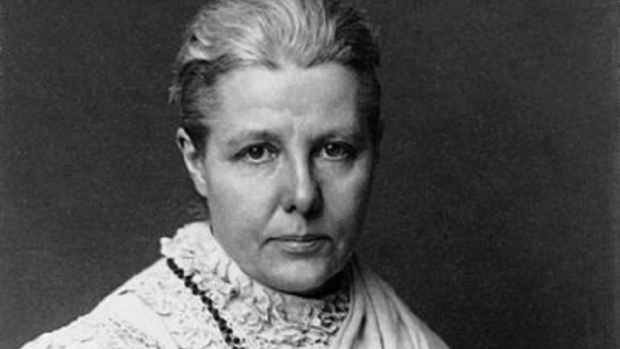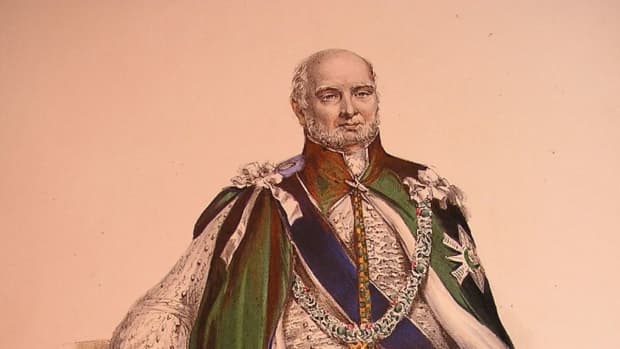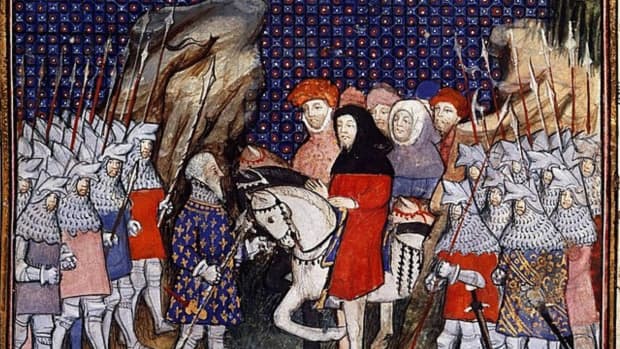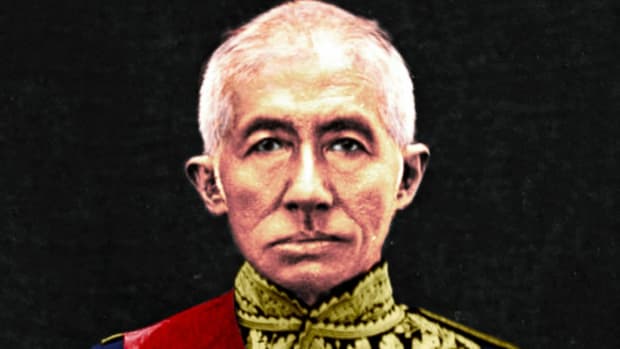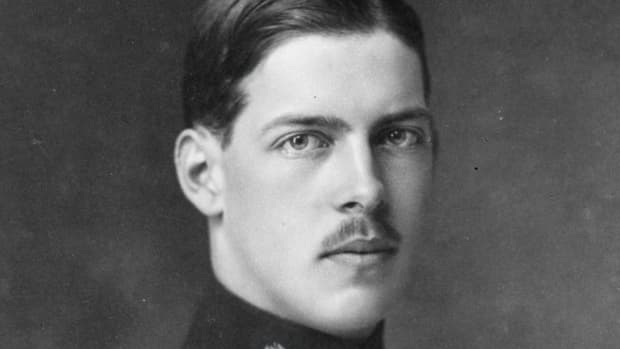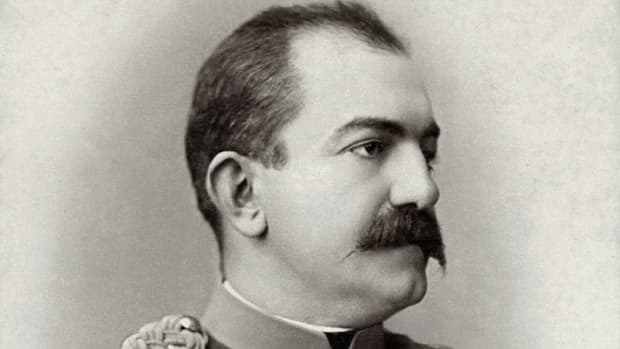Augustus the Strong: King of Poland and Elector of Saxony

Augustus II, King of Poland also known as Augustus the Strong. (Elector Frederick Augustus I of Saxony)
Wikipedia Public Domain
Augustus the Strong: Son of Saxony
Augustus the Strong, King of Poland, Grand Duke of Lithuania, Elector Frederick Augustus I of Saxony was also known as August II, August Friedrich, August II Wettin, August Mocny and August der Starke.
He was given the sobriquet strong for two reasons:
- He could break horseshoes into pieces with his hands.
- He could toss foxes, a highly dubious life skill.
He fathered numerous illegitimate children by an array of mistresses, at least ten of them, including Maria Aurora von Konigsmarck, who had Maurice de Saxe with him in 1696, and Princess Ursula Katharina Lubormirska, Imperial Princess of Teschen, who gave birth to John George, Chevalier de Saxe in 1704.
Frederick Augustus was born in Dresden (in modern-day Germany) on 12th May 1670. He was the second son of Elector John George III of Saxony from the ruling house of Wettin and his wife Princess Anna Sophie of Denmark. His brother John George was two years his senior.
Their father had an illegitimate son named John George Maximilian with the opera singer Margarita Salicola. She was proclaimed the "dame of honour" at the Dresden court.

Augustus II turned Albrechtsburg Castle in Meissen into the crown owned Royal-Polish and Electoral-Saxon Porcelain Manufacture. The company used the castle until 1863. Today it is open to the public.
Wikipedia/Leander Wattig CC2.0
From the Count of Meissen to the Elector of Saxony
The royal children were well educated, and, aged seventeen, Frederick Augustus embarked on a two-year-long tour of Europe using the alias the Count of Meissen. His love of the arts, architecture and science blossomed, and throughout his reigns in Saxony and Poland-Lithuania, he created an impressive artistic and architectural legacy, including establishing Meissen Porcelain and the construction of the Zwinger Royal Palace in Dresden.
John George III died in 1691, and he was succeeded by Frederick Augustus' brother, John George IV. Smallpox claimed him on 27th April 1694; John George and his maligned wife, Elenore Erdmuth of Saxe-Eisenach, had no children.
His illegitimate daughter Wilhemina Maria by his mistress Magdelene Sybilla was not in the line of succession. Magdalene died from smallpox a few weeks before John George IV succumbed.
Just a few months before John George's death, Frederick Augustus stopped his brother from murdering the Electress Elenore so that he could marry Magdalene Sybilla. The younger brother's hand was scarred by the elector's sword blade as he protected Elenore.
Elector Frederick Augustus I of Saxony decided to raise orphaned Wilhemina Maria at the Dresden court, and he formally recognised her as his niece.

Christiane Eberhardine of Brandenburg-Beyreuth was Augustus II's unloved wife. She never travelled to Poland. She left her husband when he became a Catholic.
Wikipedia Public Domain
Unhappily Married to Christiane Eberhardine of Brandenburg-Beyreuth
On 20th January 1693, Frederick Augustus married Christiane Eberhardine of Brandenburg-Beyreuth; from 1694 she was Electress of Saxony. It was a miserable marriage. He found her dull, and she was understandably piqued by his succession of mistresses.
She was appalled when, during the coronation procession, his mistress Maria Aurora von Konigsmarck was given a starring role and preferential treatment while she was sidelined.
Recommended
The future Augustus III, their only child, was born in Dresden in October 1696. She appeared at her husband's side at public events, but the couple lived separate lives.
In 1696 John III Sobeski, King of Poland, passed away, and Frederick Augustus was one of eighteen candidates that vied to succeed him as the elected ruler of the magnificent Commonwealth of Poland and Lithuania. To enhance the probability of success, Frederick Augustus, a Lutheran since birth, converted to Catholicism. Christiane refused to do the same, and she walked out of their marriage and into voluntary exile.

The Commonwealth of Poland-Lithuania in 1619 when it was at its largest.
Wikipedia/Matthiasrex CC3.0
Augustus II, King of Poland, Grand Duke of Lithuania Rules Without a Queen
Frederick Augustus' conversion caused dissent among the people of Saxony, but it won him his prize in the Catholic Commonwealth of Poland-Lithuania as King Augustus II. Christiane never travelled to Poland or Lithuania, and she was not accorded a ceremonial crowning. It would have been a Catholic ceremony; she would not have participated as a devoted Lutheran.
The Turkish War against the Ottoman Empire had been causing death and destruction since 1683. It reached its conclusion in 1697, and the 1699 Treaty of Carlowitz awarded Poland more land, including Podolia, Kamieniec and the Ukraine to the west of the Dnieper River.
Augustus set his sights on the Swedish-seized territory of Livonia (modern-day Estonia and Latvia); his aim was to reclaim it for the commonwealth. The victory took twenty-one tumultuous years. The Great Northern War that his assault on Livonia triggered led to his exile in Saxony in 1704 as a bruised and impoverished Poland rejected him.
The Swedes invaded Saxony in 1706, and he was forced to abdicate and sign the Treaty of Altranstadt. In the document, he formally recognised Sweden's Stanislaw Leszczynski as the rightful King of Poland.

Augustus III, King of Poland and Elector of Saxony was the son of Augustus II and Christiane.
Wikipedia Public Domain
The War of the Polish Succession
After Russia, his ally in the Great and Second Northern Wars, won the Battle of Poltova in 1709, Augustus declared the 1706 treaty null and void. He signed the Treaty of Thorns with Russia, which saw Leszcynski ousted with Russian assistance. Augustus resumed his reign in Poland-Lithuania.
In the years following his reinstatement, the Russians interfered in Polish internal affairs, which strained relations. Augustus tried to create a hereditary monarchy in Poland so that the Russian influence could be reduced. He was unsuccessful in making this formal.
Christiane died in 1727 in Pretzche on the River Elbe in Saxony. She was buried in the parish church. Neither her husband nor her son attended her funeral.
When Augustus the Strong died in Warsaw on 1st February 1733, the War of the Polish Succession began. Russia and Austria wanted to install Augustus III as if there was a hereditary monarchy; the Poles were in favour of Leszcynski's return. The conflict rumbled on until 1736 when Augustus' son won the throne, and Leszcynski renounced his claim to rule. The paperwork was completed in 1738.
Augustus' heart was taken to Dresden Cathedral. The rest of him was laid to rest in the Wawel Cathedral in Warsaw, Poland.
Sources
- SAXONY SHINES UNDER AUGUSTUS THE STRONG | Alange-Soehne.com
- AUGUSTUS II., THE STRONG | JewishEncyclopedia.com
- Augustus II | Facts, Biography, Children, & Significance | Britannica
This content is accurate and true to the best of the author’s knowledge and is not meant to substitute for formal and individualized advice from a qualified professional.
© 2023 Joanne Hayle

